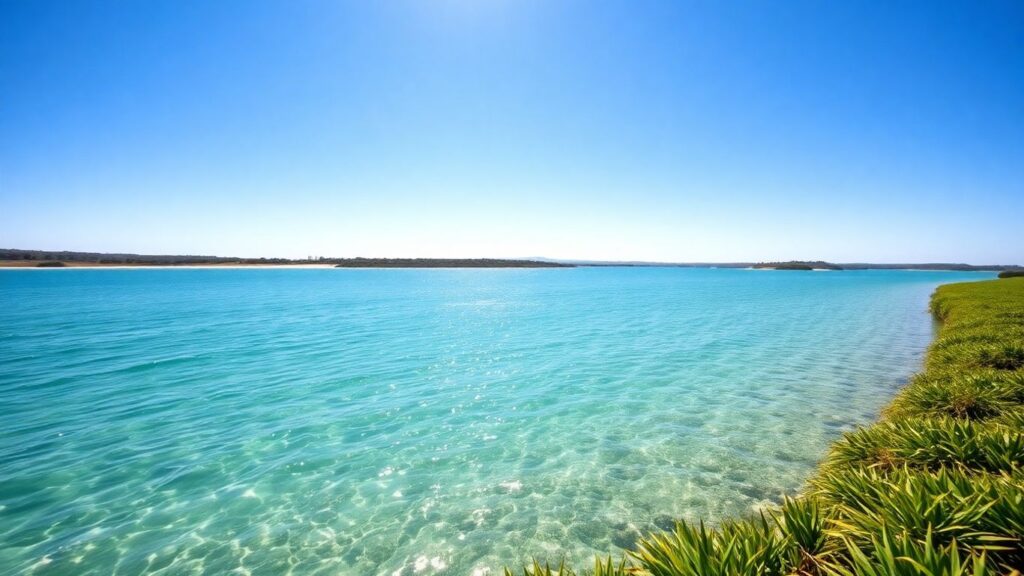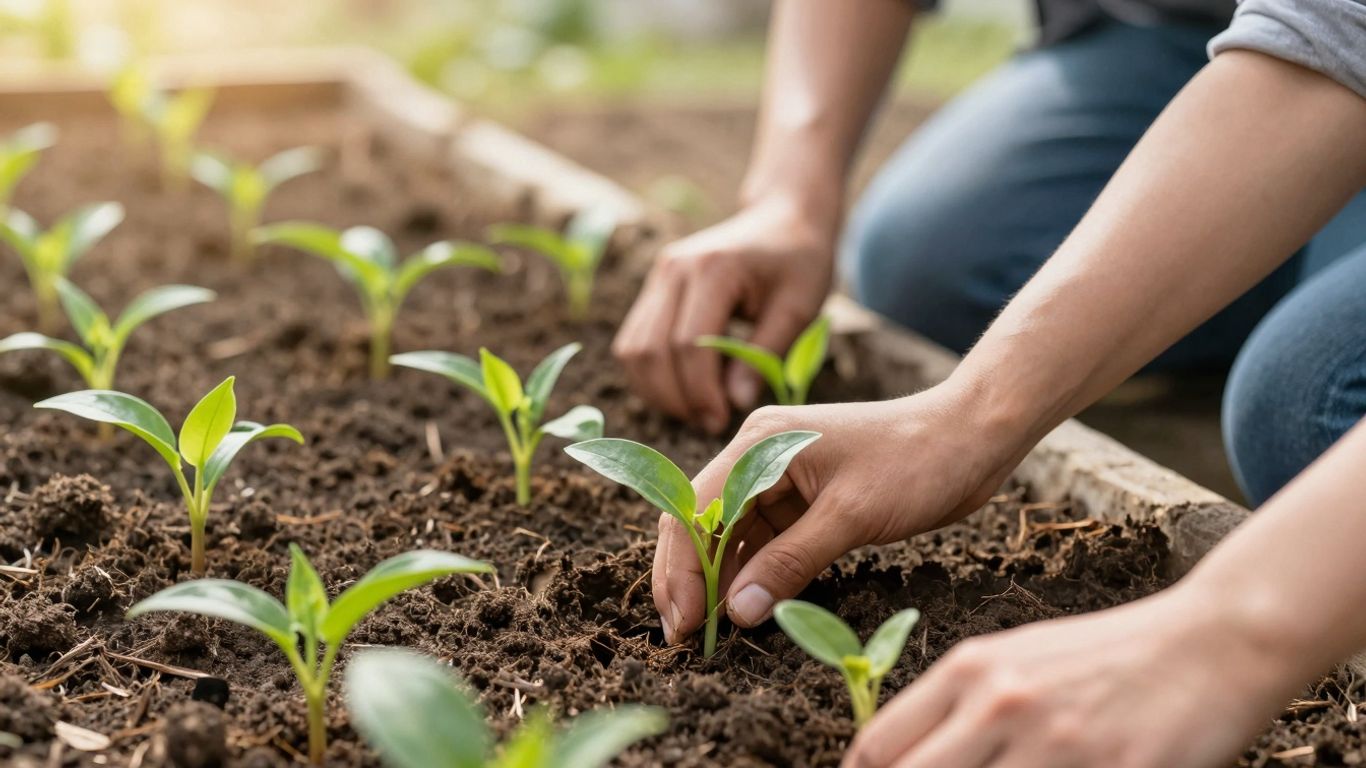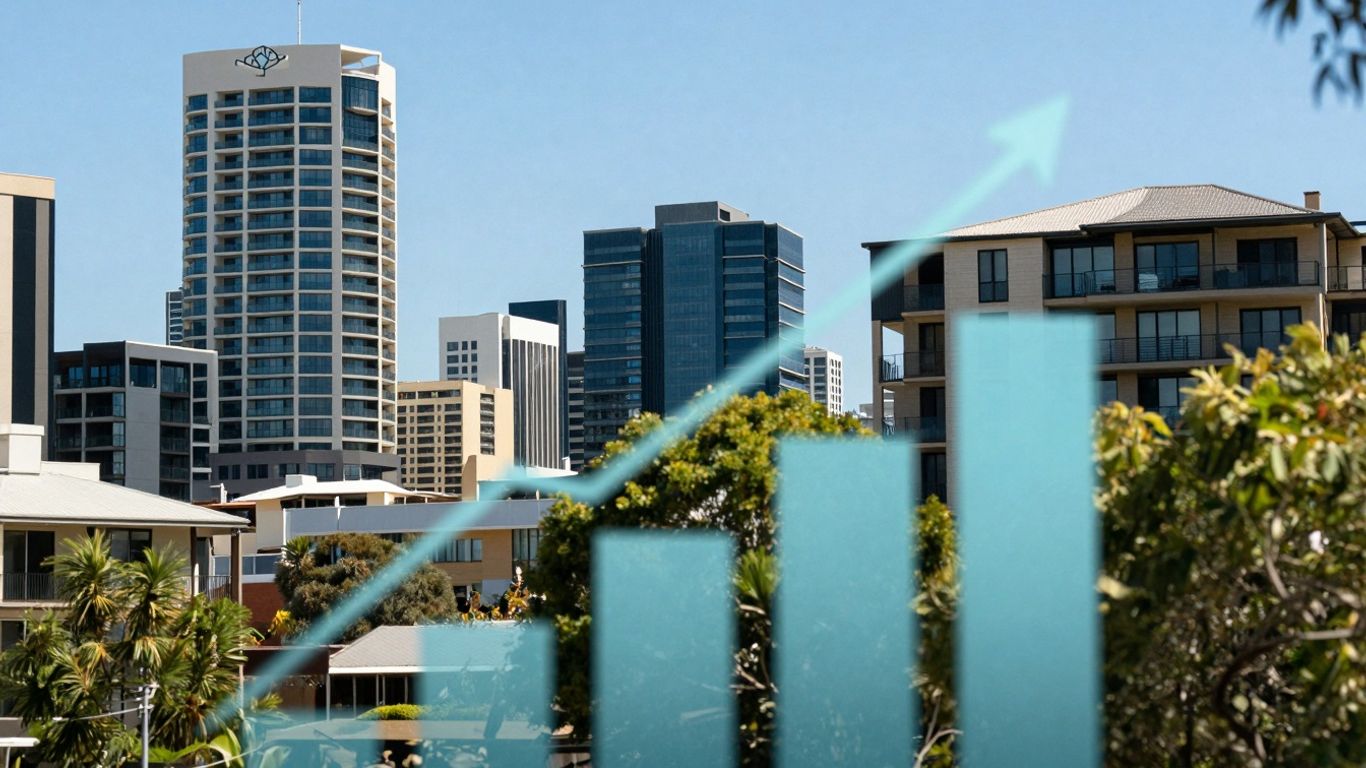Australia’s got some amazing waterways, from the big rivers to the little creeks, and people love getting out there. But with all that fun comes a need to be smart about staying safe. This guide is all about making sure everyone knows the score when it comes to water safety australia, whether you’re swimming, boating, or just hanging out by the water. We’ll look at the rules, the risks, and what we can all do to keep ourselves and our mates out of trouble.
Key Takeaways
- Australia has rules and laws for water safety, but they can be a bit tricky and differ between states. It’s important to know these rules, especially when comparing safety for rivers and beaches.
- Inland waterways like rivers and lakes are where a lot of drownings happen in Australia. Knowing where the risky spots are and why people get into trouble is the first step to stopping it.
- Everyone has a part to play in water safety. Landowners, operators, and even us regular folks need to think about risks and make smart choices to stay safe around water.
- When it comes to drinking water, Australia has standards set by groups like the NHMRC. These standards check for things like germs and chemicals to make sure our tap water is safe.
- Education and working together are big for water safety. When communities, government groups, and others team up, we can plan better and get the message out about staying safe near water.
Understanding Water Safety Australia Policy And Law
Navigating Australia’s Complex Water Safety Regulations
Australia’s approach to water safety policy is a bit of a patchwork quilt, varying quite a bit from state to state and territory to territory. While things like agriculture, public health, and keeping our drinking water clean get a lot of attention, rules specifically for recreational water safety, especially in our inland waterways, haven’t always been as clear-cut. A look at the situation shows a real difference in how we manage safety at the beach compared to our rivers and lakes. It’s clear that a lot of drownings could be avoided if we just put some standard safety practices in place. We really need better risk management, everyone working together, and a community-wide effort to make things safer. Just blocking off areas isn’t enough; we’ve got to educate people and make them aware of the risks.
Inland Waterways Versus Coastal Safety Management
When we talk about water safety in Australia, it’s important to see that managing risks at the coast is often quite different from looking after our inland waterways like rivers, lakes, and dams. Coastal areas often have more established lifeguard services and clearer signage for hazards like rips. Inland waterways, on the other hand, can be trickier. They might not have the same level of supervision, and the dangers can change with the seasons and water levels. Think about submerged objects, strong currents that aren’t always visible, or sudden drop-offs. These differences mean that safety strategies need to be tailored specifically to the type of waterway.
The Role Of Royal Life Saving Society – Australia
The Royal Life Saving Society – Australia plays a pretty big part in all of this. They’ve been doing a lot of work, including developing guidelines specifically for inland waterway safety. These guidelines are aimed at anyone who has a hand in managing these areas, from government bodies and local councils to landowners and operators of recreational programs. They’re designed to help people figure out the risks and put measures in place to prevent injuries and deaths. It’s all about making sure that people can enjoy our waterways safely, whether they’re swimming, boating, or just spending time by the water.
Key Risks In Australia’s Inland Waterways

Identifying High-Risk Inland Waterway Locations
Australia’s rivers, lakes, dams, and creeks are beautiful spots, but they can also be pretty dangerous if we’re not careful. It’s not just about the big, obvious hazards either. Sometimes, the most unexpected places catch people out. Think about those quiet little swimming holes that look calm on the surface but have hidden currents underneath, or irrigation channels that might seem shallow but have strong flows. Even dams, while holding back a lot of water, can have dangerous undertows near the wall or spillways.
Rivers and creeks are where most drownings happen in inland waterways. It’s a pretty stark statistic, and it really highlights where we need to focus our attention. These places often have changing conditions, submerged objects, and currents that can be hard to spot. Lakes and dams, while less frequent, still account for a significant number of incidents, often related to boating or accidental falls.
Here’s a quick look at where drownings tend to occur:
- Rivers and creeks: Around 73% of incidents.
- Lakes and dams: About 27% of incidents.
Understanding Drowning Statistics In Rivers And Lakes
Looking at the numbers helps us see the bigger picture. For instance, over a ten-year stretch, we saw over 900 drowning deaths in our inland waterways. That’s a lot of lives lost, and sadly, many of these could have been avoided. The summer months, as you might expect, often see a spike in these tragedies, with a big chunk of all drowning deaths happening in rivers and lakes during that time. It’s not always about swimming either; boating accidents and simply falling in are also major contributors.
It’s easy to think of water safety as just about swimming, but the reality is much broader. People drown while boating, fishing, or even just walking near the water’s edge. The conditions can change so quickly, and what looks safe one minute can become hazardous the next.
Preventable Drownings Through Risk Management
So, what can we do about it? A lot of these sad events aren’t just accidents; they’re preventable. It comes down to understanding the risks and putting measures in place to manage them. This isn’t just about putting up a few signs, though that’s part of it. It’s about looking at a waterway and thinking about all the ways someone could get into trouble and then doing something about it. This could mean better fencing around dangerous areas, clear signage about currents or depth, or even just educating people about the specific dangers of a particular spot. Effective risk management is key to reducing these numbers.
Ensuring Safety Around Australian Waterways

Australia’s got some pretty amazing waterways, from the big rivers to little creeks and lakes. They’re great for a swim, a fish, or just hanging out. But, you know, water can be dangerous too. It’s not just about the ocean; inland spots can catch you out.
Landowner And Operator Responsibilities For Water Safety
If you own land with a waterway on it, or you run a business that uses one, like a campsite or a tour boat, you’ve got a job to do. It’s about making sure people don’t get hurt. This means looking at what could go wrong and trying to fix it before it does. Think about things like steep banks, strong currents, or even just slippery rocks. You can’t just say ‘it’s not my problem’.
Customising Safety Efforts For Specific Waterways
Every waterway is different, right? A big, deep lake needs different safety measures than a shallow, fast-flowing creek. You can’t just slap up a generic sign and call it a day. You’ve got to look at the actual spot. What are the local risks? Are there hidden snags underwater? Is it popular with families or mostly experienced swimmers? Tailoring your approach is key.
Applying Good Judgement In Water Safety Management
Sometimes, the rules and guidelines don’t cover every single weird situation you might find. That’s where common sense comes in. If something feels a bit dodgy, it probably is. It’s about using your brain and making sensible decisions to keep people safe. This might mean putting up extra signs, clearing away debris, or even temporarily closing off an area if it’s just too risky.
It’s easy to think that water safety is just about swimming pools and beaches, but inland waterways are where a lot of drownings happen each year. We need to be extra careful and aware when we’re near rivers, lakes, and dams.
Here are some things to think about:
- Know the risks: What’s the water depth like? Are there strong currents? Is the bottom muddy or rocky?
- Supervise children: Never leave kids unsupervised near water, even for a second.
- Check conditions: Is the water level high? Has there been a lot of rain? Is there a storm coming?
- Be aware of your limits: Don’t swim alone, especially in unfamiliar places. If you’re not a strong swimmer, stick to shallow areas.
It’s all about being prepared and making smart choices so everyone can enjoy Australia’s beautiful waterways safely.
Australian Drinking Water Quality Standards
When it comes to staying hydrated in Australia, knowing your water is safe to drink is pretty important. We’re lucky here, most of our tap water is top-notch and perfectly fine to gulp down. But what actually makes it ‘safe’? That’s where the Australian Drinking Water Guidelines come in.
The National Health and Medical Research Council’s Role
The main outfit looking after these standards is the National Health and Medical Research Council, or NHMRC for short. They’re the ones who put together the Australian Drinking Water Guidelines. These aren’t just random suggestions; they’re based on solid health advice and are regularly checked and updated. Think of them as the rulebook for making sure the water coming out of your tap isn’t going to make you sick.
Key Components of Water Quality Assessment
So, how do they check if water is good to go? It’s not just one thing. They look at a few different areas:
- Microbial Quality: This is about making sure there are no nasty bugs like bacteria or viruses hanging around that could cause illness.
- Chemical Quality: They test for all sorts of chemicals. This includes things that might be naturally in the water, or things that could get in from farming or industry, like heavy metals or pesticides. They also check chemicals added on purpose, like chlorine for disinfecting or fluoride for teeth.
- Physical Quality: This covers things you can see, smell, or taste. Is the water cloudy (turbidity)? Does it have a weird colour or smell? While not always a health risk, it affects whether you’d actually want to drink it.
- Radiological Quality: Yep, they even check for radioactive stuff, just to be absolutely sure.
Understanding Potential Water Contaminants
Even with all these checks, sometimes things can sneak into our water. Old pipes in your house might leach metals. Runoff from farms can carry chemicals into rivers. Factories can sometimes be a source of pollution. While our water suppliers work hard to keep things clean, it’s good to know what could potentially be an issue. Most of the time, the water is perfectly safe, but awareness is key.
It’s a bit like cooking. You follow a recipe, use good ingredients, and keep an eye on things to make sure the meal turns out well. Water treatment is similar, with strict processes to make sure what ends up in your glass is healthy.
Here’s a quick look at what they monitor:
| Component | What’s Checked |
|---|---|
| Microbial | Bacteria (e.g., E. coli), viruses, protozoa |
| Chemical | Metals (lead, copper), pesticides, nitrates, chlorine, fluoride, disinfection by-products |
| Physical | Turbidity, colour, taste, odour |
| Radiological | Naturally occurring radioactive elements |
Knowing that these standards are in place and regularly checked gives you a bit of peace of mind when you turn on the tap. If you’re ever curious about your local water, most water suppliers make their quality reports available.
Enhancing Water Safety Through Education And Collaboration
Community Engagement In Water Safety Planning
Getting everyone involved is a big part of making our waterways safer. It’s not just about putting up signs; it’s about listening to what people who use these places actually need and want. When communities have a say in how safety is managed, they tend to take more ownership. This means thinking about local knowledge, like where kids usually play or where people like to fish. It’s about making sure the safety plans actually fit the people and the place.
Cross-Agency Collaboration For Effective Management
No single group can handle water safety alone. Think about it: you’ve got local councils, state governments, surf lifesaving clubs, and even park rangers. They all have a piece of the puzzle. When these different organisations work together, sharing information and resources, it makes a huge difference. It stops gaps from appearing where people might fall through the cracks. A united front means a safer experience for everyone near the water.
Incorporating Stakeholder Values In Waterway Safety
Different people see our waterways in different ways. Traditional Owners have deep cultural connections, while recreational users might just want a safe spot for a swim or a picnic. Tourism operators have their own interests too. It’s important to bring all these viewpoints to the table when planning safety measures. This way, we can create plans that respect everyone’s connection to the water and make sure safety efforts are practical and well-received by the whole community.
Here’s a look at who needs to be part of the conversation:
- Local councils: They manage many public access points and local parks.
- State and territory governments: They set broader policies and manage larger waterways.
- Water authorities: They oversee water resources and infrastructure.
- Lifesaving organisations: They provide vital rescue services and safety advice.
- Community groups: Local clubs and resident associations often have on-the-ground insights.
- Landowners: Especially those with private access to rivers or lakes.
When we talk about water safety, it’s easy to focus on the obvious dangers like strong currents or deep water. But we also need to consider the less visible risks, like how different groups of people use a waterway and what their specific concerns might be. A plan that works for swimmers might not be ideal for boaters, and vice versa. That’s why talking to everyone involved is so important – it helps us see the whole picture and create safety measures that are fair and effective for all.
Practical Water Safety Measures In Australia
When we talk about staying safe around Australia’s waterways, it’s not just about knowing how to swim. It’s about being smart and prepared, no matter where you are. Whether you’re heading to the beach, a local river, or even just a backyard pool, a bit of foresight goes a long way.
Risk Assessment For Aquatic Environments
Before you even dip a toe in, it’s a good idea to size up the situation. Think about what could go wrong. Are there strong currents? Is the water depth changing suddenly? Are there hidden rocks or debris? For many popular spots, you can find information online or at local visitor centres. Understanding the specific risks of a particular waterway is the first step to staying safe. It’s about being aware of your surroundings and not just assuming everything is safe.
Managing Risks Within And Around Waterways
Once you know the risks, you can start managing them. This might mean choosing a patrolled beach, staying away from fast-flowing rivers after heavy rain, or making sure kids are supervised at all times. For landowners or operators of recreational areas, this means putting up clear signage about hazards, maintaining fences where necessary, and ensuring any equipment is in good working order. It’s about putting practical measures in place to reduce the chances of something going wrong. For example, if you’re managing a lake, you might consider:
- Installing depth markers.
- Creating designated swimming zones.
- Ensuring clear access and exit points.
- Regularly checking for submerged hazards.
It’s easy to get caught up in the fun and forget about the potential dangers. Taking a moment to assess and manage risks can prevent a minor incident from turning into a serious problem. This applies to everyone, from families on holiday to groups organising events.
The Importance Of Public Awareness Campaigns
We’ve all seen them – those campaigns on TV or online reminding us about water safety. They’re not just there to fill airtime; they play a big role in keeping us informed. These campaigns highlight common dangers, share tips for staying safe, and remind us of the importance of supervision, especially for children. They help to build a culture where water safety is a priority for everyone. You can find a lot of helpful information from organisations like Royal Life Saving Society – Australia that are dedicated to reducing drowning incidents across the country.
Wrapping Up: Keeping Our Waterways Safe for Everyone
So, we’ve gone through a fair bit about keeping Australia’s water safe, from the big rivers and lakes to the water coming out of our taps. It’s pretty clear that looking after our waterways isn’t just a job for one person or group; it takes everyone chipping in. Landowners, councils, and even us regular folks have a part to play. Remember, those guidelines are there to help, but sometimes you just need to use your common sense, especially when every spot is a bit different. By working together and staying aware, we can make sure our amazing Aussie water stays a place for fun and enjoyment, not worry. Let’s keep it that way for years to come.
Frequently Asked Questions
What are the main rules for water safety in Australia?
Australia has different rules for water safety depending on where you are, like rivers or the beach. The Royal Life Saving Society – Australia helps create guidelines to keep people safe. These rules cover things like how to manage risks near water and making sure people know about potential dangers.
Where do most drowning deaths happen in Australia?
Sadly, many drowning deaths happen in inland waterways like rivers and lakes. This is why it’s super important to be extra careful when swimming, boating, or even just walking near these places. They’re beautiful, but can be tricky.
Who is responsible for keeping waterways safe?
It’s a team effort! Landowners and people who run activities near water have a big job to make sure things are safe. This means thinking about the specific risks of each place and putting safety measures in place. It’s about using common sense to prevent accidents.
How do we know if our drinking water is safe to drink?
The National Health and Medical Research Council (NHMRC) sets the standards for safe drinking water in Australia. They look at things like germs, chemicals, and how the water looks and tastes. Your local water supplier should also provide information about your tap water’s quality.
What are the main things checked for drinking water quality?
They check for tiny living things that could make you sick (microbial quality), any harmful chemicals like metals or pesticides (chemical quality), how clear and nice the water looks and smells (physical quality), and if there are any radioactive bits (radiological quality).
How can we all help make water safer in Australia?
Everyone can help! This includes learning about water safety, telling people about risks, and working together with different groups like councils and lifesavers. When we all understand the dangers and work as a team, we can make our waterways safer for everyone to enjoy.





